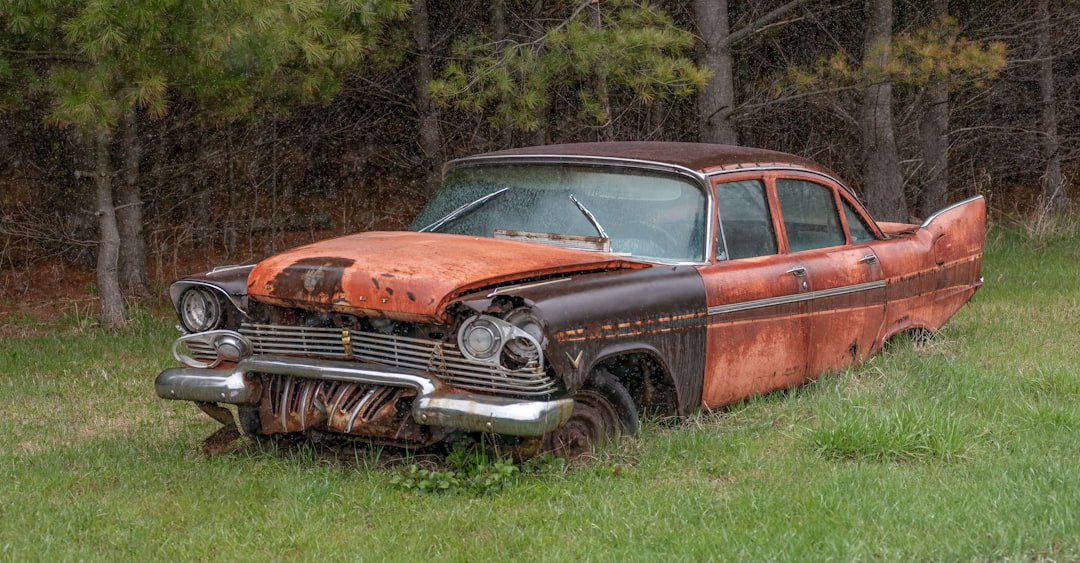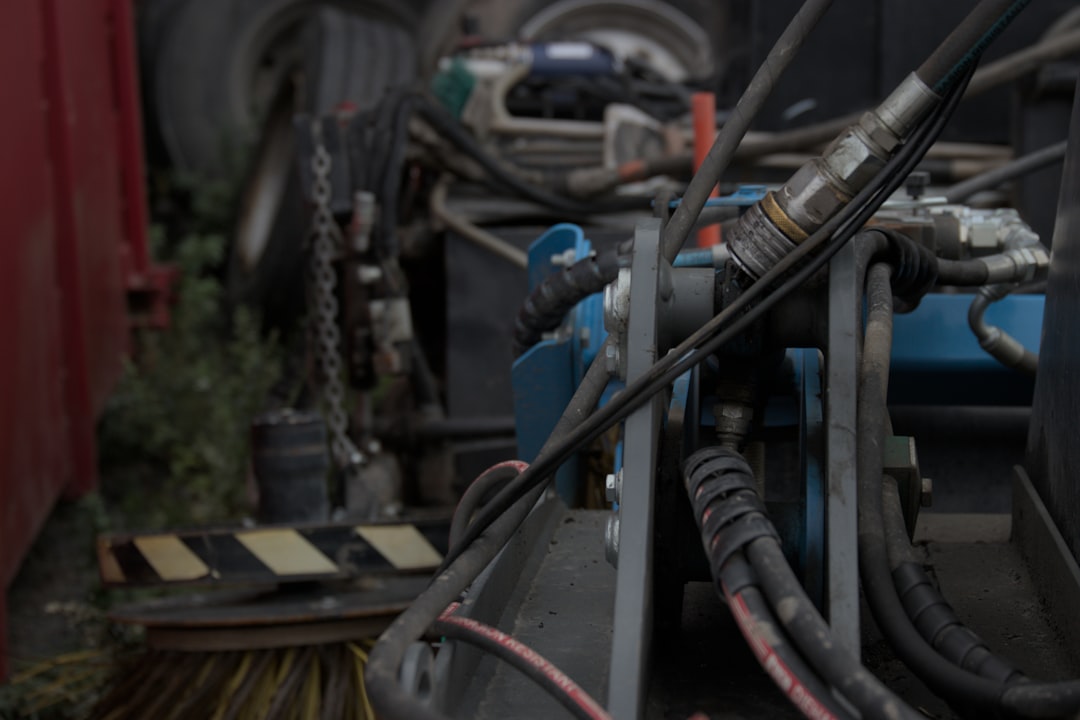

Engage prospects with a scan and streamline customer engagement with FREE QR code marketing tools by Sona – no strings attached!
Create a Free QR CodeFree consultation

No commitment

Engage prospects with a scan and streamline customer engagement with FREE QR code marketing tools by Sona – no strings attached!
Create a Free QR CodeFree consultation

No commitment
Auto salvage yards have emerged as vital players in both the automotive and recycling sectors, providing access to affordable used car parts, supporting environmental sustainability, and driving local economies. Whether customers are searching for a junkyard locator, seeking used auto parts for sale, or evaluating options for vehicle recycling, these yards offer an efficient way to source parts and dispose of vehicles responsibly. Yet, as consumer journeys become increasingly digital, untracked site visitors and offline-only workflows amplify the risk of missing out on valuable leads. Prospects seek information, visit the yard, then leave no digital trace.
This shift toward online research and mobile-first engagement presents both an opportunity and a serious challenge. When customer intent goes uncaptured, whether because of paper sign-up sheets, static flyers, or lack of digital follow-up, yards often lose out to more responsive competitors. Disconnected touchpoints and delayed engagement can mean valuable leads slip away or that upsell or cross-sell opportunities are missed. QR codes offer a simple, scalable solution: every physical surface becomes a digital entry point that captures intent, speeds up response times, and connects offline interest to online action. See the broader trend in automotive digital transformation.
Modern QR technology now offers a bridge between these worlds, transforming every physical touchpoint into an actionable, trackable digital moment. By integrating QR codes at key locations, auto salvage yards can convert previously anonymous interest into CRM-ready leads, segment high-potential buyers, and automate follow-up so that no opportunity falls through the cracks. With a platform like Sona QR, teams can generate codes, manage destinations, analyze scans, and sync data to Sona.com for attribution that connects scans to revenue.

High-intent visitors walk through your gates every day. Some are hunting for a rare component, others want to recycle a vehicle quickly, and some are returning buyers who would purchase more if engagement were easier. The persistent challenge is that too many of these interactions remain invisible. Without a clean, digital pathway to capture contact details, record interest, and trigger follow-up, ready-to-buy prospects leave without a trace. QR codes solve this at the source: scan equals signal, and signal drives action.
Replacing analog touchpoints with QR-driven flows turns dead ends into measurable outcomes. Paper sign-in books become mobile forms, static business cards become vCards saved in seconds, and flyer promotions become trackable offers. When scans feed directly into your CRM, your team knows who to contact, what they want, and when they engaged. The result is a shorter time to quote, fewer missed conversations, and a consistent pipeline of leads organized by intent.
Current QR platforms, such as Sona QR, empower salvage yards to generate codes, design mobile experiences, analyze scan data, and sync it all with systems like HubSpot or Salesforce. With Sona.com, you can attribute scans to pipeline and revenue. Read more on offline attribution.

Traditional in-yard touchpoints like print flyers and appointment cards rarely convert anonymous browsers into actionable leads. Staff may hand out a business card or point to a parts shelf, but if the buyer never calls back, the opportunity disappears. QR codes change the dynamic by providing a rapid, no-app bridge from curiosity to commitment. A scan takes visitors directly to a quote request, live inventory page, or call-back form, with their action tracked from the start. For fundamentals, see QR marketing basics.
This matters because speed and clarity win in salvage operations. Buyers often compare options in the moment. Sellers look for the first yard that makes the process painless. A visible QR with a benefit-driven CTA reduces friction and captures intent while interest is high. It also provides data to help you refine offers, allocate budget, and optimize staffing. Over time, QR instrumentation becomes the backbone of a more responsive, data-driven yard.

Auto salvage yards juggle different audiences and workflows: part buyers who want speed, sellers who want clarity on payout and process, and auction attendees who want a seamless check-in. Choosing the right QR code format for each use case standardizes data capture and reduces friction. Above all, keep destinations mobile friendly and short, with clear CTAs and forms tailored to the task.
For most yards, the most valuable formats lead to web-based destinations that can be tracked, edited, and integrated into your CRM. Dynamic links are ideal for campaigns where you want to change offers or inventory without replacing printed materials. Simpler formats like vCards help ensure future contact, while SMS or email triggers can be useful when you want the prospect to initiate a prefilled message that your team can handle quickly.
A centralized platform like Sona QR lets you manage every format in one place and connect them to Sona.com for downstream attribution. For measurement fundamentals, review revenue attribution. This ensures consistency in branding, data capture, and follow-up across the buyer journey.

Growth bottlenecks in salvage operations commonly appear where intent is high but capture is weak. Visitors walk past entry signage without a clear next step. Regional print ads create awareness but provide no fast path to quote. Auction attendance is strong, but manual sign-in leaves you with incomplete data. The right QR placements transform these moments into measurable engagement.
Start by auditing your physical environment and outbound materials. Look for places where prospects already pause or make decisions: the gate, the parts counter, the pay window, or the loading area. Then map a QR-enabled action to each location that matches the intent you expect. Include clear, benefit-driven language so customers know exactly what they get by scanning.
Embedding QR codes where customer decisions happen converts passive interest into actionable leads. Over time, the data tells you where to invest and what messaging resonates.
Every step of the salvage workflow carries a risk of quiet drop-off. A buyer cannot find a part, a seller postpones intake because paperwork seems confusing, or an auction visitor never gets added to your nurture list. QR codes counter these leaks with fast, contextual paths to progress. The key is making each code specific to the task and promising a clear benefit.
For operators, this is also about standardization. When quote requests and intake forms follow consistent patterns, you reduce errors and improve throughput. When auction registration is digital from the start, you gain a clean lead list and can follow up with relevant offers. Over time, these efficiencies blend into better service and higher revenue per visit.
By closing the common gaps with clear QR pathways, you increase conversion and build a first-party data asset that powers long-term growth.
Anonymous foot traffic is one of the biggest missed opportunities in this industry. People browse, ask a quick question, or attend an event without leaving a trace of who they are or what they wanted. QR codes provide structured moments to tag intent and capture context. When you deploy unique codes for each touchpoint and journey stage, every scan becomes a signal you can use for smarter follow-up.
Think of scans as micro-conversions. An entry gate scan indicates general interest, whereas a parts bin scan signals high-buying intent for a specific model. An auction registration scan suggests a bidder profile you can nurture with future catalogs. When these signals feed your CRM and ad platforms, you can segment messaging and timing to match the person’s needs and readiness to act. For execution ideas, see this retargeting playbook.
Modern platforms like Sona QR make each code a smart entry point. With Sona.com, you can align scan signals with website visits, calls, and sales activity, then retarget based on real behavior rather than assumptions.
Fragmented messaging is a common pain point. Print ads generate interest but cannot be measured. Social content drives awareness but rarely connects to in-yard actions. Event attendance is strong, but data entry is inconsistent and late. QR codes close these gaps by creating a consistent, trackable handshake between offline and online channels.
Treat QR codes as connective tissue. When a postcard leads to a prefilled quote request, you can attribute pipeline to the mail drop. When outdoor signage sends buyers to a live inventory page, you can test which creative wins. When receipts carry QR links to surveys or parts alerts, you build loyalty and increase retention. The end result is an omnichannel system where every action is visible and every next step is clear.
Centralized management with Sona QR keeps your branding and destinations consistent across channels. When scan data syncs to Sona.com and your CRM, you gain a full view of the journey from first scan to completed sale.
Consistency is the difference between a one-off QR test and a reliable growth engine. Without a structured plan, codes get placed haphazardly, data stays siloed, and the team loses confidence in results. A clear checklist ensures that every campaign maps to a business goal, uses the right QR format, and gets measured for improvement.
Start by selecting a high-impact use case, such as capturing more part inquiries at the counter or accelerating vehicle intake for sellers. Then design the landing experience to match the moment. Clear copy, short forms, and a strong CTA drive scans and completion. Finally, ensure tracking is enabled from day one so you can evolve the program with real-world data.
When every campaign follows this playbook, your QR program becomes predictable, scalable, and directly tied to revenue. The team sees what works, learns quickly, and expands with confidence.
Too many salvage operations struggle to connect offline engagement with closed deals. They know a Saturday was busy, but cannot prove which signs or flyers drove the traffic. They recall a crowded auction, but lack clean contact data for follow-up. Advanced QR analytics turn this blind spot into insight by tracking each scan and linking it to downstream actions.
The core idea is simple. If you can track the path from scan to quote, from quote to invoice, and from invoice to repeat purchase, you can invest where it matters and cut what does not. Attribution also fuels better customer experiences. When you know someone scanned a parts bin code for a specific model, you can send targeted alerts, not generic emails. Learn how models affect reporting with multi-touch attribution.
With Sona QR and Sona.com, you can capture scan-level details, unify them with web and CRM data, and generate reports that attribute revenue to QR engagement. This turns QR from a convenience into a performance channel you can manage and scale.
Even well-designed QR campaigns can underperform if they lack clear value messaging or consistent follow-through. Success often hinges on telling customers exactly what they get by scanning, making the process easy in the moment, and connecting the scan to automated workflows that keep momentum. Training staff to encourage scans and answer simple questions also lifts results quickly. For inspiration on boosting scans, see how to increase QR engagement.
As your program matures, look for opportunities to extend QR into retention and advocacy. Post-sale docs can solicit reviews or enroll customers in parts alerts. Yard signage near loading bays can introduce loyalty offers for trade buyers. Small improvements in these moments compound into meaningful growth in scan rates and repeat business.
You can generate and track your first QR codes for free with Sona QR. Start creating QR codes for free: Start creating QR codes for free. Create a few key placements, and use Sona.com to connect those scans to pipeline and closed revenue.

Across the country, salvage operations are updating everyday touchpoints with QR codes and seeing tangible improvements. The common thread is not a single perfect tactic, but a commitment to instrumenting the journey from the entrance gate to the final invoice. These examples illustrate how different yards are turning scans into outcomes and outcomes into growth.
Use them as inspiration for your own deployment. Start with one or two high-traffic placements and a well-defined landing experience. Measure results, then expand into new contexts like auctions, direct mail, or loyalty programs.
QR codes are a tactic, not a strategy by themselves. Success depends on pairing them with clear value, clean destinations, and follow-up that respects the customer’s time. Many underperforming deployments share the same pitfalls: vague CTAs, cluttered designs, poor scannability in real-world conditions, and lack of post-scan automation. Avoid these and your results will climb.
Set a high bar for usability. Test codes under glare and dust, at different distances, and on older phones. Keep forms short and offer progress feedback. Make sure every scan delivers immediate value, whether that is a firm quote, a scheduling link, or a live inventory view. When customers learn that scanning equals speed and clarity, adoption grows on its own.
QR codes have redefined how auto salvage yards engage, convert, and nurture both buyers and sellers. By turning previously anonymous touchpoints into digital opportunities, operators can capture high-fit leads in real time, eliminate the frustration of lost prospects, and reduce delays that once cost them deals.
The essential impact is easy to see: faster part inquiries, improved supply intake, consistent messaging, and full transparency from the first scan through to final sale. As salvage operators adapt to rising consumer expectations and more sophisticated buyer journeys, adopting QR workflows positions them to recover missed opportunities, maximize ROI, and future-proof lead generation.
As the market continues its digital transformation, experimenting with a modern QR platform can help you address old pain points and unlock new pockets of growth. With Sona QR, you have everything you need to create and manage codes, monitor performance, and sync scan data to your CRM. With Sona.com, you can attribute scans to pipeline and revenue so that every customer interaction, in the yard or online, counts toward your bottom line.
QR codes have transformed auto salvage yards from simple parts providers into dynamic, lead-generating hubs. By enabling quick access to inventory details, pricing, and special offers, QR codes streamline customer acquisition and enhance the buying experience, turning passive interest into actionable leads. Imagine instantly capturing qualified prospects right at the yard and knowing which codes drive the most inquiries and sales.
With Sona QR, you can create dynamic, trackable QR codes in seconds, update your campaigns without costly reprints, and connect every scan to real revenue outcomes. This means no missed opportunities and smarter marketing that directly boosts your bottom line. Start for free with Sona QR today and turn every scan into a valuable connection, a loyal customer, or your next sale.
Auto salvage yards provide affordable used car parts, support environmental sustainability, enable responsible vehicle disposal, and drive local economic growth.
Use junkyard locators, search for yards with digital engagement like QR codes for live inventory and quick quotes, and consider yards that offer fast response and easy vehicle recycling processes.
Auto salvage yards offer used car parts, junk cars for recycling, and sometimes auctioned salvage vehicles, with inventory often accessible via live stock checks or parts bins.
Quality can be assessed by using yards that provide instant quotes, real-time inventory checks via QR codes, and clear communication channels to confirm part condition before purchase.
Selling involves submitting vehicle details through digital forms accessed via QR codes, uploading photos and title info, scheduling pickup times, and receiving a prompt offer from the yard.
QR codes convert physical touchpoints into digital leads by enabling quick data capture, automating quote requests, facilitating vehicle intake, and syncing scan data to CRM systems for faster follow-up.
Common formats include web links to live inventory or quote forms, vCards for contact sharing, SMS or email triggers for inquiries, digital forms for vehicle intake, and dynamic links for updatable content.
Effective placements include entry signage, parts counters and bins, vehicle hangtags for sellers, local ads and event signage, and receipts or post-sale documents to encourage engagement.
They track scan time, location, and device, sync data to CRM systems with tags, measure channel performance, connect scans to sales outcomes, and use analytics for multi-touch attribution and journey mapping.
Tips include using clear, benefit-driven CTAs, designing codes for easy scanning under real conditions, training staff to encourage scanning, automating rapid follow-up, and applying UTM parameters for tracking.
Use Sona QR's trackable codes to improve customer acquisition and engagement today.
Create Your FREE Trackable QR Code in SecondsJoin results-focused teams combining Sona Platform automation with advanced Google Ads strategies to scale lead generation

Connect your existing CRM

Free Account Enrichment

No setup fees
No commitment required

Free consultation

Get a custom Google Ads roadmap for your business






Launch campaigns that generate qualified leads in 30 days or less.
